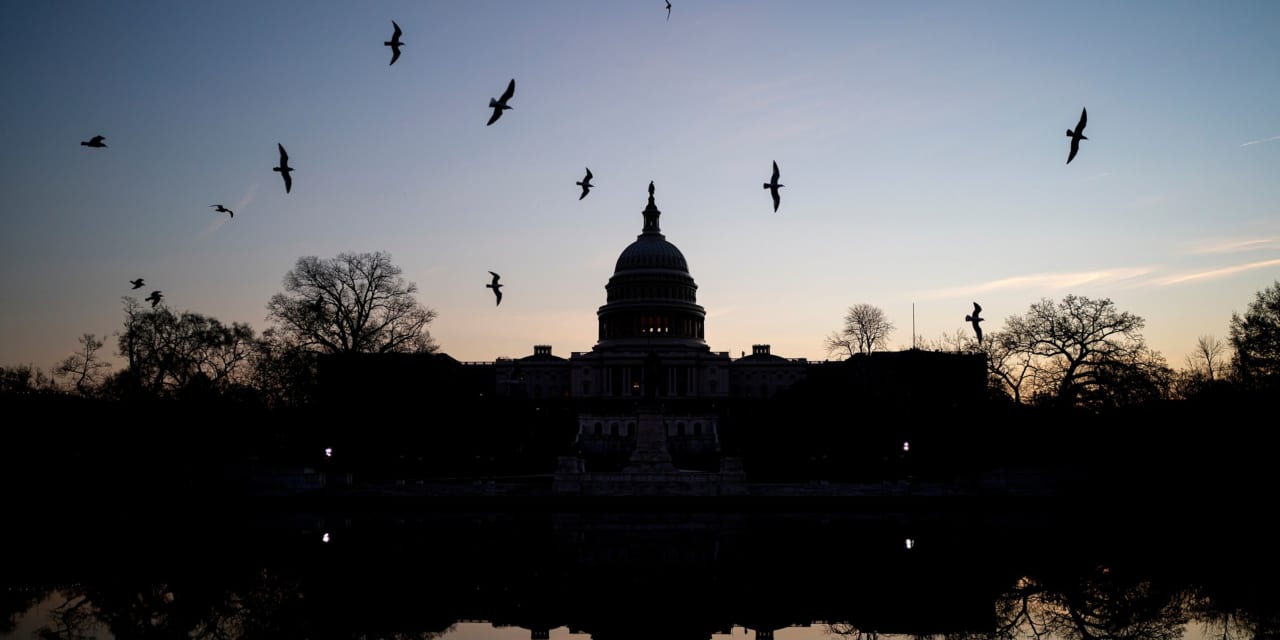About the author: Christopher Smart is managing partner of the Arbroath Group, an investment strategy consultancy, and was a senior economic policy adviser in the Obama administration.
For all the analysis of what is happening to America’s economy, it’s more instructive to explore what isn’t happening. Just how did we avoid that great recession that markets and strategists predicted so confidently? And how well will we handle the downturn when the next challenges to growth?
The good news is that today’s vibrant outlook reflects a lot of structural resilience that was able to absorb one of the sharpest rate increases in the Federal Reserve’s history. The bad news is that the country’s brittle politics make it harder to address future hazards around trade and debt. The risks to U.S. growth are less likely to come from persistent inflation than haphazard policy choices.
For all the bad headlines in our daily newsfeeds, it’s important to understand the reasons behind the current economic trifecta that continues to deliver healthy growth, rising employment and falling inflation four years after the pandemic.
Most important during this wrenching tightening cycle is that U.S. banks operate with twice the capital they had before the 2008 crisis. Having weathered the pandemic shock, it was easy for most of them to withstand rising rates and book any default-related losses. Healthy company and household balance sheets were also crucial to absorbing the pain, especially since many borrowers had locked in low rates on long-term loans and mortgages before the Fed’s hikes.
Past cycles have also featured cascading crises that start as far away as Thailand and as close as Mexico. This time: crickets. Sure, Turkey’s president offered novel economic theories about interest rates causing inflation and Argentina is teetering on the verge of yet another default. But most emerging markets feature floating currencies, balanced budgets, and ample reserves. That’s how they, too, managed the global rate surge without contagion.
Beyond financial flexibility, U.S. labor markets shifted and grew in ways few predicted since the pandemic. Remember the fears that a “Great Resignation” might trigger a bidding war for workers that would foil the Fed’s plans to defeat inflation? Instead, more flexible business models and the chance to work from home have delivered both a prime-age participation rate above pre-pandemic levels and surging levels of productivity. Energy independence helped, too, as the United States has become entirely self-sufficient in hydrocarbons even as solar and wind projects add to generation capacity.
But if America’s economic and financial institutions have grown more resilient and flexible in the last decade, its political mechanisms have grown more brittle and dysfunctional.
Consider the decisions ahead.
In many countries it would be unsettling that the government is scheduled to run out of money in less than two weeks without action from a sharply divided legislature. Most likely Congress will keep lurching from one “continuing resolution” to the next, but uncertainty comes with a cost. More dangerous, perhaps, is the time bomb that has been planted with a debt ceiling that must now be raised before Jan. 3, 2025. Once again, actual default is a low probability, but a few weeks after a bruising election campaign is never a good time to find compromise.
The bigger risks will emerge later next year, regardless of the election result, as the U.S. economic policy turns more interventionist and more protectionist. Both President Joe Biden and former President Donald Trump will favor a generous mix of tariffs, export controls, and subsidies. But these will be deployed amid emotional tribal divisions between parties and within parties. Will we subsidize electric vehicles or oil production? If we are blocking advanced semiconductor exports, what about jet engines or ball bearings? The economy risks becoming a shifting sea of incentives and penalties that will add risk to every major business decision.
More important, neither political party takes seriously the risks of mounting deficits and debt. The default position for Republicans remains cutting taxes while Democrats focus on where more spending might help. Fiscal debates become intense struggles over tiny compromises on the 10-year budget window rather than serious debates on how best to promote growth. This leaves little room to decide how much “decoupling” from China we can afford, how we might train a workforce that keeps up with rapid technological change and how we ensure the economy will preserve all that resilience and creativity that helped avoid recession.
So far, little of Washington’s chaos hasn’t hurt its ability to borrow and spend. Despite ratings downgrades, impeachment threats and looming trade wars, investors still buy America’s bonds because they are backed by a business model with an enviable track record of renewal and adaptability. At some point, however, this won’t be enough when angry and disjointed management refuses to settle on a coherent strategy to meet increasingly urgent risks.
Guest commentaries like this one are written by authors outside the Barron’s and MarketWatch newsroom. They reflect the perspective and opinions of the authors. Submit commentary proposals and other feedback to [email protected].
Read the full article here




